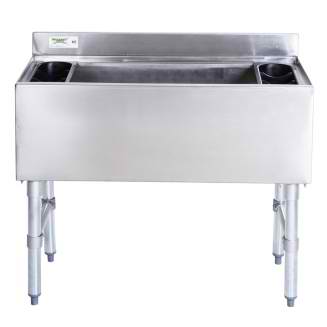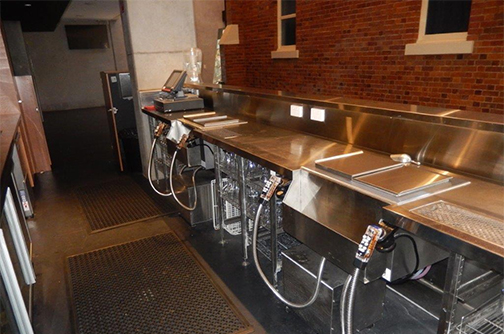
The running cost of commercial refrigeration continues to be one of the most critical, ongoing cost issues for all businesses, and it is a tough issue to address. Paul Jones, the founder of Ice & Beverage Solutions, strives to combat this for his customers with cost cutting being a central focus of the way Ice & Beverage Solutions is run. Through how Paul Jones has modelled his business and the products he installs, he has been met with many other suppliers implementing cost-effective solutions into their bar designs due to the economical features of the equipment he supplies.
Typically, post mix systems are installed in a back of house location. This requires a python to carry the soda water and syrup to the front of house where it is dispensed to customers. Some of the motors and pumps used in these systems require constant power, which immediately heightens your power costs.

Many clients of Ice & Beverage Solutions report that since the introduction of the unique post mix ice well system that they have seen a dramatic reduction in their power consumption as well as a significant drop in service and maintenance costs.
The special thing about this system is that it eliminates the need for unnecessary bells and whistles. With one machine, you can get two services. It is the ice in the well that chills the soda and syrup lines which are encased in the base of the ice well. That ice doesn’t go to waste either, the well offers up to twenty kilogrammes of ice storage for serving purposes too.
With no refrigeration and motors that run around the clock, better longevity and life costs, this machine will significantly reduce the running, maintenance and servicing costs for your business all while delivering you more gross profit.

When taking the post mix ice well into consideration in comparison to a conventional soda circuit, there can be seen a distinct difference in running costs alone.
There are many variables of which can affect calculations, however, consider a soda circuit with three pumps and fifteen metres of python operating in a 40° celsius environment with 75% relative humidity. The energy use of this machine is approximately 22.4 kilowatts per twenty-four hours, whereas, the ice well comes down to 0 kilowatts per twenty-four hours. Keep in mind the carbonator pump operates intermittently when drinks are drawn, but when idle this machine uses as little energy as possible.
Some of the variables that can affect the energy consumption of traditional soda circuit machines are:
- Python length, ambient temperature of where it is located (thickness, age and quality)
- Ambient temperature of incoming syrup
- Ambient temperature of incoming water
- Ambient temperature where the soda circuit is located
- Cleanliness of the soda circuits condenser filter
- Ventilation/obstruction of airflow around the soda circuit
- Age/condition of pumps, agitators, condenser fans, compressors
- Number and type of dispense points
- Peak demand dispense volume
- Continuous demand dispense volume
Regardless of these variables with venues, it is clear that the traditional soda circuit equipment is reducing your profits and leaving a significantly larger carbon footprint.
There is a number of Government established Energy Saving incentives and Environmental schemes that are available incentives for businesses to consider reducing electricity consumption. Call Paul Jones directly on (07) 5578 9820 or 0414 938 776 to implement this cost-effective system and find out more.

